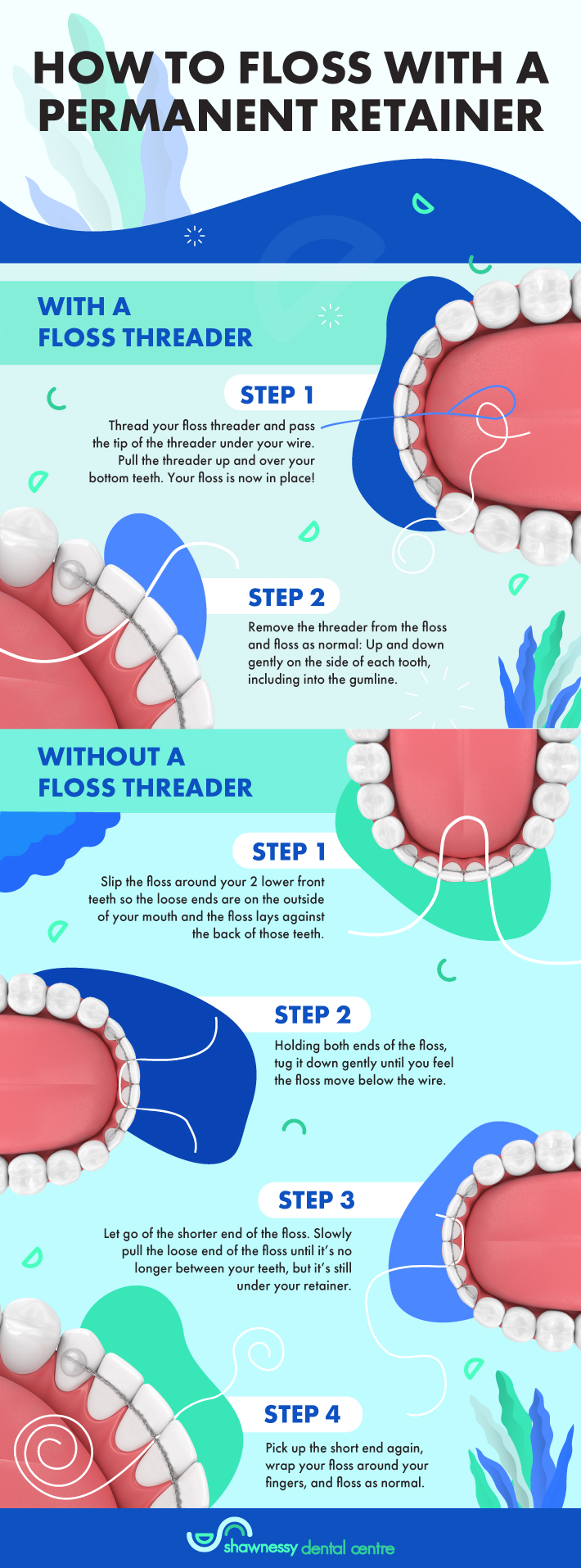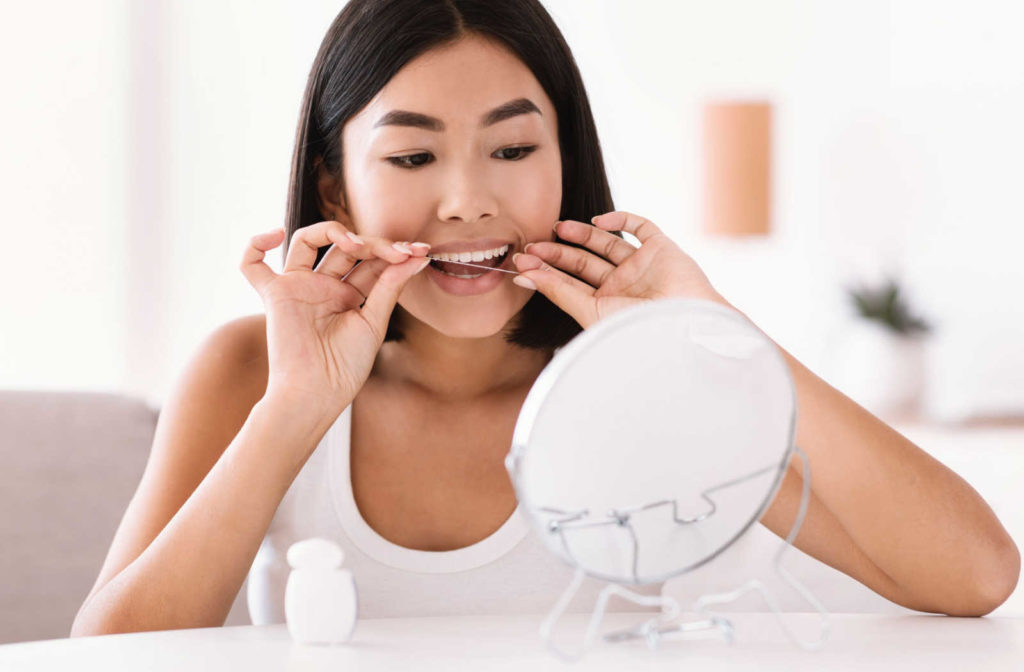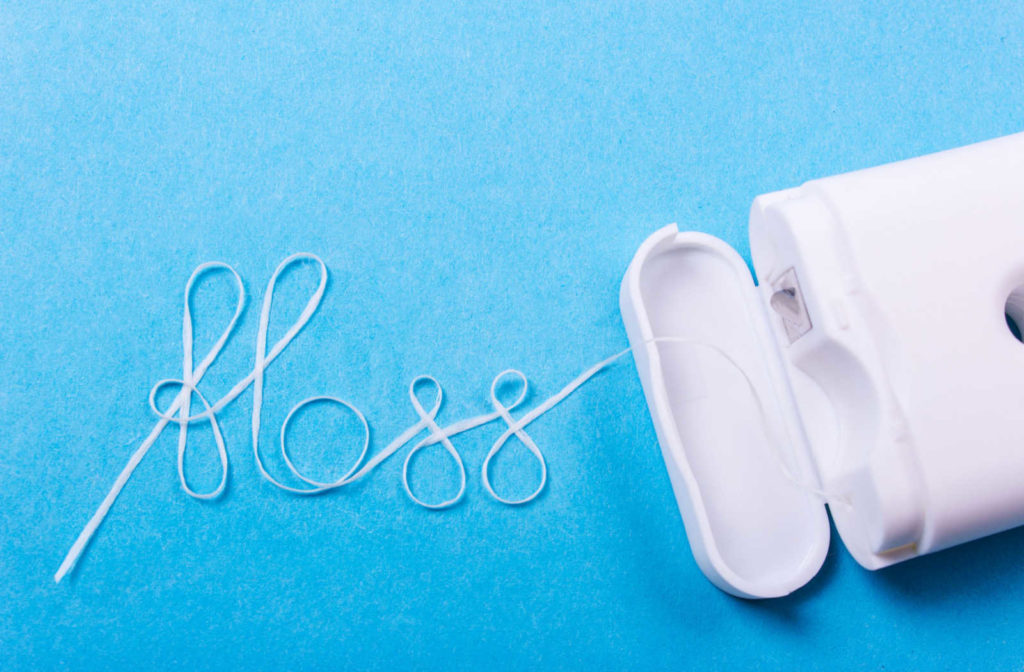Your permanent retainer is an important part of keeping your teeth beautifully straight after all the time you spent wearing braces.
Flossing between the teeth closest to your retainer is essential for keeping your mouth healthy, but flossing around your lingual wire requires a slight change to how you flossed with braces.
It might be tempting to skip flossing these teeth because of the extra effort it takes to get floss in there. But flossing is an important part of keeping your teeth healthy for the rest of your life, along with seeing us twice a year for a professional cleaning.
The 2 Best Ways to Floss with a Permanent Retainer
Flossing removes food particles and bacteria before it hardens into tartar, which can only be removed with a professional cleaning.
Just like when you first learned to floss your teeth, flossing with a fixed retainer will take some practice. Give yourself time and patience to learn this new technique and you’ll be a pro in no time.
With a Floss Threader
A floss threader looks like an oversized flexible sewing needle. The threader allows you to more easily get the floss under your wire and then between your teeth.
- Take a length of floss that is about the length of your arm. Thread the floss through the open head of the threader.
- Pass the tip of the threader under your wire and pull it up and over your bottom teeth. Your floss is now in place!
- Remove the threader from the floss and floss as you normally would: Move the floss up and down 2 or 3 times against the side of each tooth and gently into the gumline. Use a new section of the floss for each tooth.
- If your retainer is bonded to 2 teeth only, you can move freely to the next teeth. If it’s bonded to each tooth, you’ll need to re-thread to reach the next teeth.
- Floss the rest of your teeth (don’t forget those molars!) and finish up by brushing.
Without a Floss Threader
While a threader makes this process easier when you’re starting, it’s not required if your retainer is only bonded to 2 teeth. Here’s how to floss around a permanent retainer without a floss threader.
- Again, start with a length of floss about as long as your arm.
- About 20 cm from the end of your strand, slip the floss around your 2 lower front teeth so that the loose ends are on the outside of your mouth and the floss lays against the back of those teeth. The floss is above your retainer at this point.
- Holding both ends of the floss, tug it down gently until you feel it move below your retainer.
- Let go of the shorter end of the floss and slowly pull until that end of the floss is no longer between your teeth, but it’s still under your wire.
- Pick up that short end again, wrap your floss around your fingers, and floss as normal.

Even More Ways to Floss with a Permanent Retainer
Sometimes, the way your permanent retainer is placed, the shape of your mouth, or just your own comfort level makes the previously mentioned flossing techniques unworkable.
The great news is that there are other ways to keep those teeth around your retainer clean.
Thread Through the Teeth
If you can’t manage to thread your floss under your wire and up, you can instead tie your floss to the threader, then carefully push the threader between your teeth and under the wire from the outside of your teeth to the inside.
Then proceed with flossing as normal.
Use a Water Flosser
For some patients, especially teens, using a water flosser can be more effective at removing plaque than struggling with dental floss.
Use Pre-Cut Dental Floss
Pre-cut strands of dental floss such as Superfloss can make flossing around your retainer simpler. The floss has a stiffened end to make threading under your retainer easier, and a fluffy section of floss for larger gaps between teeth.
Use Interdental Brushes
These thin, flexible brushes let you reach between your teeth while being gentle on your teeth and gums thanks to their rubber tips.

What’s the Point of Flossing?
Flossing is foundational to your oral health! If you skip flossing you’re missing more than 1/3 of your total tooth surface.
Flossing removes plaque, which is the main cause of gum disease. If you don’t brush and floss away plaque, it will harden into tartar (on your teeth as well as your retainer!). Tartar has to be removed professionally and as much as we love seeing you, it’s best for your teeth to floss daily.
What if There’s Blood When I Floss?
A little discomfort is normal when you first start flossing. Blood could be due to gum irritation caused by flossing or brushing the wrong way. If flossing is new for you, there could be a buildup of bacteria, plaque, and tartar causing irritation and bleeding.
However, if the bleeding doesn’t stop after a few days, come see us or give us a call and we’ll check if there is another issue.
Healthy Gums, Healthy Life
We want to provide you and your family with comprehensive dental care and a world-class patient experience. If you need help adjusting to your new permanent retainer, or you have any questions about your oral health, please contact us and we’ll be happy to help in any way we can.


